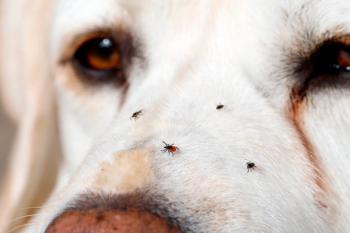
Quality assurance tips for your clinical laboratory (Proceedings)
QA, as it relates to the clinical laboratory, is an all encompassing program for the systematic monitoring and evaluation of the various aspects of producing laboratory results to ensure that standards of quality are being met.
Introduction
We have discussed the basic methods behind hematology and biochemical instrumentation and some concepts related to instrument selection and calibration in the previous sessions. What needs to be done to insure confidence in your results is next. Explanations of quality assurance, quality control, requirements and guidelines, and some practical recommendations how to initiate and maintain them will be shared in this session.
Quality assurance (QA)
QA, as it relates to the clinical laboratory, is an all encompassing program for the systematic monitoring and evaluation of the various aspects of producing laboratory results to ensure that standards of quality are being met. These aspects are traditionally divided into three phases: preanalytical, analytical, and postanalytical. Portions of these phases will be discussed in more detail in the "Lab Errors" session. This session will focus on aspects more specifically related to the analytical phase. Since analyzers are comprised of numerous pieces and parts like lamps, tubing, electronics, and reagents that can wear, leak, plug, precipitate, become contaminated, etc. over time, regular monitoring is necessary.
Regulations, requirements, and suggestions
While human laboratories and the equipment therein are highly regulated, similar regulation is lacking in the veterinary field. This provides ample opportunity for a lack of education, experience, and/or commitment to interfere with producing quality results. The following selected requirements have been summarized from those posted on The American Animal Hospital Association website (
The above is an excellent start to a good QA program, but portions of it are impractical and the comment "if QC is available" in item 4 leaves a loophole for both users and manufacturers. The American Society of Veterinary Clinical has developed QA standards for rePathology ference laboratories and is in the process of refining them for clinic use. In addition, others are working through the VIN network to establish some recommendations. Further explanations and recommendations for some additional confirmatory assessments are described below.
Quality control (QC)
In laboratory lingo, "QC" typically refers to commercial material prepared to mimic patient samples when run on specific pieces of equipment. For example, a large batch (lot) of material, comprised of fixed erythrocytes with particles added to mimic leukocytes and platelets, is produced and analyzed in order to establish a defined target value and acceptable range of results for a specific analyzer or group of analyzers (i.e. impedance-based). Aliquots are dispensed into small vials for shipment to participating users. These materials have a defined shelf life and target values will change between lots. Following the instructions in the package insert related handling the material is crucial to its effective use. QC materials cannot be exchanged between impedance and flow/laser based equipment. In a similar fashion, cell-free material is generated for testing with biochemical and other analyzers. Typically, two to three "levels" containing low, normal or high concentrations of the analytes of interest are available.
Hematology QC
It is recommended that Hematology QC material is run daily and preferably during the routine startup procedures. The data is manually plotted on a graph known as a "Levy-Jennings" graph unless the instrument software stores the data to simplify this step. Those running a handful of samples or less each day only need to run one mid-level (normal) control each day. This has several benefits: keeping costs to a minimum, insuring the analyzer is running appropriately at the start of each day, and it provides data to technical reps over the long term for troubleshooting purposes when a problem does develop. Less frequent QC runs are not in compliance with AAHA and expand the time frame since the last "good" data was obtained. If all values are in range on Monday, but one or more are out of range on Friday, then every sample run in between was subject to error as there is no indication when the problem began. The most recent set of data with "in range" results only confirms operation up to that point. Larger practices running many samples or over two or more shifts may opt to run more than one level or more frequently than daily. In addition, a control may be run at any time patient results are in question and should be run after every calibration to verify the appropriateness of the calibration. In the latter case, the control material should be a different level than that used to calibrate with.
The data obtained should be evaluated each day off the L-J plot if possible. The Levy-Jennings (L-J) plot is a graph of time vs. concentration with the mean target value and the cutoffs for 3 standard deviations on either side of the target indicated. A typical QC graph indicating good control values will show values evenly scattered up to 2 SD above and below the mean over time. Trends (increasing/decreasing values), shifts (sudden significant change in 1 direction as the 1-3s rule) and erratic results (dots all over and often outside 2 SD) are easily detected. Gradual trends might indicate deteriorating reagents, lamps, development of dirty tubing or aspirating needles, etc. Shifts might indicate a reagent or QC lot change, replacement of a lamp, etc. If certain erratic dots can be tracked to an individual operator, operator-related errors can be traced to an individual and further training is in order.
If all points are in range, then one may be tempted to presume the run is good and the instrument is ready for use. The following should be kept in mind when interpreting QC data: 1) Since the defined ranges are typically based on capturing the mean +/- 3SD or ~99% of the samples run, one can expect ~1% of the results to have mild deviations outside the given range. 2) A group of individuals* working through VIN (Freeman KP, personal communication) have done extensive analysis of 20 clinics willing to participate in a QC evaluation (publication pending). One of their conclusions is that if a single data point exceeds a total shift of 3 SD, there is a high probability of detecting an error (85%) and low probability of falsely rejecting the data (0%). This is known as the 1-3s rule (one control, 3SD shift) as defined by Westgard; his website (
Other useful hematology markers
Hematology provides for several opportunities to confirm appropriate date is obtained from an analyzer each time a sample is run. For example, the Mean Corpuscular Hemoglobin Concentration (MCHC) is calculated by dividing the [Hgb] by the Hct and multiplying the result by 100. On most analyzers, the denominator (hematocrit) is typically calculated from the Mean Cell Volume (MCV) times the numbers of erythrocytes (RBC). A reference interval for MCHC representative of several analyzers is around 32-38g/dl and is a physiologic standard. Another way to look at is that the [Hgb] x 3 ≈ Hct, give or take 3%. Values above this range are physiologically impossible but can be obtained with samples of poor quality that falsely increase the Hgb or falsely decrease the Hct. Examples are samples with hemolysis and/or lipemia or when from patients with certain pathologic states as marked Heinz bodies, agglutination (IMHA), and extreme leukocytosis (some leukemic conditions). Low MCHC values may be obtained with hypochromasia associated with marked regeneration because the hemoglobin is immature or rarely with iron deficiency anemia. Truly low MCHC values can be confirmed by evaluating the film for moderate to marked amounts of polychromasia or hypochromasia. If the analyzer reports a reticulocyte count, this number should approximate the proportion of polychromatophilic erythrocytes observed on the blood film.
If these conditions do not exist in the patient/sample, instrument error affecting with "white cell side", represented by the Hgb value, or "red cell side", represented by the RBC and/or MCV values. The red cell side can be checked by running a manual PCV on a well-mixed sample. This value should match the automated Hct +/-3% and if not, the problem involves the red cell side of the analyzer. If plasma protein content by a refractometer is a part of the CBC evaluation, the PCV is easy to include and provides an opportunity to evaluate the sample for hemolysis and lipemia. Another, albeit less sensitive marker is the Red Cell Distribution Width (RDW). This value is the coefficient of variation of the MCV and indicates the amount of anisocytosis (variation in cell size). Experienced microscopists should be able to observe anisocytosis on the blood film if the RDW is elevated.
Errors on the white cell side can be detected by estimating the WBC and Plt density in the monolayer of a well-prepared blood film. The feathered edge should be examined for platelet clumps that might falsely lower the platelet count and for excessive accumulation of leukocytes indicating a thinly prepared film resulting in an uneven distribution. In the latter case, the larger cells are often pushed to the edge leaving the smaller lymphocytes behind. This can result in an apparent mismatch with the automated differential. Matching the cell density observed on the blood film to that obtained from the analyzer should be a part of the routine CBC protocol anyway, especially for abnormal samples.
A mismatch discovered by the suggestions above related to either "side" of the analyzer should be confirmed by running a commercial QC material and any time results are questionable. Doing so provides more solid evidence of the problem if technical service intervention is required.
Chemistry QC
The weekly QC schedule as recommended by AAHA is minimally appropriate for liquid chemistry analyzers but may difficult, excessively costly or otherwise impractical for the typical Point-of-Care (POC) type chemistry analyzers in use. Those with cartridges (i-STAT) are essentially an analyzer in each cartridge so data obtained from one cartridge may not reflect that obtained on the next if a sporadic problem exists. That being said, monitoring of newly received shipments and/or lot numbers of reagents, cartridges or rotors is a more reasonable compromise. In addition, as with hematology, QC should be run to verify the analytical process anytime questionable results are obtained that cannot be explained by the quality of the patient sample. Be sure to rule out certain explanations for erratic results as significant amounts of hemolysis, lipemia, icterus or paraproteinemia that might interfere with the method. The first three may be measured by the analyzer and reported as sample quality indices. The reported values should approximate the gross observations of the sample. For example, inappropriate separation of serum from the clot resulting in retained RBCs in the sample that may be misread as lipemia. If the icterus index is high, the total bilirubin should be proportionately high and if the sample is lipemic, the triglyceride value should be proportionately high. The anion gap is calculated if a complete set of electrolyte data is obtained. High values are often explained by a variety of physiologic conditions. Low values, however, are typically only explained by a decreased albumin. If hypoalbuminemia is not present, instrument function should be verified with QC material. Other interferences exist that are method and instrument specific exist and along with interferences related to sample quality should be spelled out in the operator's manual. The user should be thoroughly aware of the more common interferences or the systems in use.
Documentation
Documentation is an important part of the QA program and should include not only QC data and actions taken for unacceptable results, but also temperatures of reagent storage areas, procedures, instrument troubleshooting steps and consequences and instrument maintenance. Procedures should include appropriate sample collection, handling and quality requirements, send-out criteria, critical value limits indicating when to repeat in-house, send for verification elsewhere or perhaps when to consult a pathologist. Personnel qualifications, training, performance assessment and continuing education should also be documented.
Other recommendations
With the availability of multiple analyzers and each often utilizing a different method, comparing results obtained from an in-house analyzer to that of a referral laboratory is problematic. Ideally, results should be similarly low, normal or elevated, but most certainly won't be the same. In addition, changes can occur in the sample induced by aging of the sample during transit. Participating in an external QC program as that available through the Veterinary Laboratory Association (
The effects of sample collection and handling can severely compromise any sample analysis and are discussed more thoroughly in the next session "Lab Errors....If You Can't Catch Them, Avoid Them".
References and recommended reading
American Society of Veterinary Clinical Pathology. Quality assurance guidelines. Available at
Freeman KP, Evans EW, Leser S. Quality control for in-hospital veterinary laboratory testing. AVMA 1999;215:928-9.
Freeman KP. Personal communication 2/3/10. VIN related work by Pion P, Rishniw M and Maher T.
Weiser MG, Thrall MA. Quality control recommendations and procedures for in-clinic laboratories in Vet Clin Small Animal 37(2007) 237-244.
Newsletter
From exam room tips to practice management insights, get trusted veterinary news delivered straight to your inbox—subscribe to dvm360.






